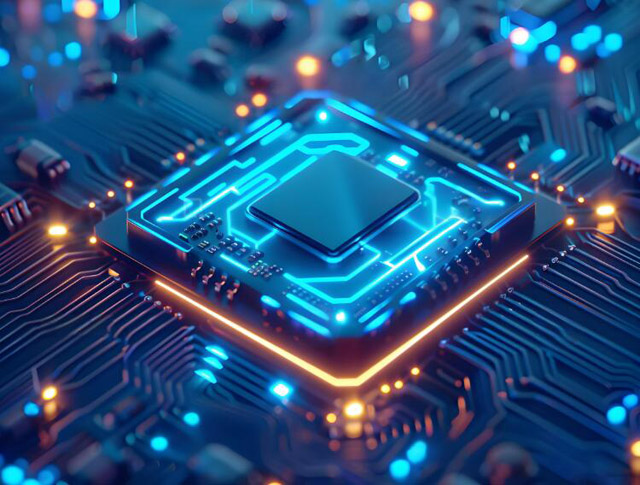Welcome Here Shenzhen Mingjiada Electronics Co., Ltd.

sales@hkmjd.com

sales@hkmjd.com

Service Telephone:86-755-83294757
 Latest Information
Latest Information● Advances in artificial intelligence, machine learning, and sensor fusion technologies have facilitated the expansion of robotics capabilities in a variety of areas, including factory automation, home services, educational assistance, healthcare, an…
● Advances in artificial intelligence, machine learning, and sensor fusion technologies have facilitated the expansion of robotics capabilities in a variety of areas, including factory automation, home services, educational assistance, healthcare, and military applications.
● Continued innovation in high-speed connectivity, edge computing, network redundancy, and failover procedures are critical to optimising robotic applications.
● The emergence of natural language processing and emotional AI is expected to drive more intuitive, responsive and adaptive human-robot interactions.
Molex Incorporated, a global electronics industry leader and innovative connector manufacturer, has released a forward-looking industry report that looks at the future potential of robotics for human-robot communication and collaboration, stating: With robotics, we can expect to realise more intuitive, intelligent and connected ways of interacting. The Molex Robotics Report 2024: How Robotics Can Unleash Human Potential charts how highly advanced robotic systems and multi-functional robots will revolutionise fundamental aspects of the future of life - from improving the efficiency of factory operations and revolutionising student learning, to enhancing the performance of the smart home, optimising patient care, and enhancing support for military operations.
As we examine the role of robots in different industries, we are increasingly aware that the future of robotics will be shaped by the evolving human-robot relationship,’ said Brian Hauge, senior vice president and president of consumer and business solutions, Molex Incorporated. This latest industry report reveals the unprecedented growth of human-robot interaction while highlighting the key supporting technologies and the need for seamless connectivity between robotic systems and humans to enable faster, more efficient and extremely accurate decision-making.’
Underpinning technologies driving robotics progress
The future of robotics relies heavily on continued advances in communications and computing technologies that underpin robots to operate autonomously in dynamic environments. High-speed connectivity is paramount, as robotic systems require low-latency communications and near-instantaneous data transfers in order to respond quickly and accurately. 5G/6G networks will provide high-bandwidth, low-latency communications, but multiple connectivity options will also need to be considered when designing a robotic solution, including switching between 5G, Wi-Fi, or satellite networks to ensure multi-channel redundancy.
Equally important is the ability of edge devices to process data in close proximity to ensure independent and continuous operation of robotic systems and robots. Edge computing enables automation solutions to process data instantly, which is critical for applications that require instantaneous decision-making. In most industrial automation or manufacturing environments, robots are often equipped with safety contingency protocols to ensure that power and functionality are brought down to a safe operating state in the event that connectivity is interrupted or compromised.
Robotics benefits from AI/machine learning and sensor fusion innovations
As the biggest drivers of increased robot adaptability, advances in artificial intelligence and machine learning are critical. AI algorithms enable robots to make informed decisions based on real-time data and quickly adapt to new situations, even predicting future conditions based on previous interactions. Through machine learning, robots can analyse patterns to optimise behaviour, while increasing efficiency and accuracy through continuous learning, adaptation and improvement. Sensor fusion technology combines data from multiple sources, such as LiDAR, cameras, depth and force sensors, to help multi-purpose robots better sense depth, movement conditions and obstacles in different environments.
Key factors to enhance human-robot interaction
According to a robotics report provided by Molex, the market is on the verge of seeing robots that can understand, respond to, and even anticipate human emotions and situational needs. For instance, through natural language processing (NLP), robots can understand verbal commands, engage in conversations, and adapt their behavior to the context. In addition, emotional AI enables robots to recognise and respond to emotional cues by analysing a human's tone of voice or facial expression.Molex expects that the rise of such human-centric interactions will lead to future robotic systems and autonomous robots that are better able to adapt to complex home environments and take on new roles such as personalised educational tutors, essential surgical assistants and patient monitors that provide a continuum of services. and providing ongoing services.
With the advent of the Industry 4.0 era, collaborative robots (cobots) are becoming more widely used in the industrial sector, and their tasks are becoming more complex. They can not only ensure the stable operation of production lines, but also anticipate and solve potential production bottlenecks, while assisting engineers to design better products. In the future, collaborative robots will redefine the concepts of precision and personalisation in environments as diverse as operating theatres, classrooms and battlefields.
Key Drivers of Change in Robotics
To take advantage of the significant advances in robotics and the wider opportunities for interaction, we will rely on innovations in connectivity, power management, and data processing, and Molex's portfolio of robust and reliable connectors will support the growing need for human-robot collaboration to meet the most demanding scenarios across a wide range of industries.

Time:2025-08-07
![Recycle [TI] Humidity Sensor, Magnetic Sensor, mmWave Radar Sensor, Optical Sensor](/upload/202508/07/202508071453558678.jpg)
Time:2025-08-07

Time:2025-08-07

Time:2025-08-07
Contact Number:86-755-83294757
Enterprise QQ:1668527835/ 2850151598/ 2850151584/ 2850151585
Business Hours:9:00-18:00
E-mail:sales@hkmjd.com
Company Address:Room1239, Guoli building, Zhenzhong Road, Futian District, Shenzhen, Guangdong
CopyRight ©2022 Copyright belongs to Mingjiada Yue ICP Bei No. 05062024-12

Official QR Code
Links: